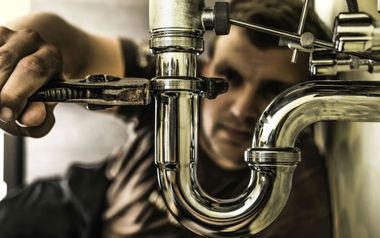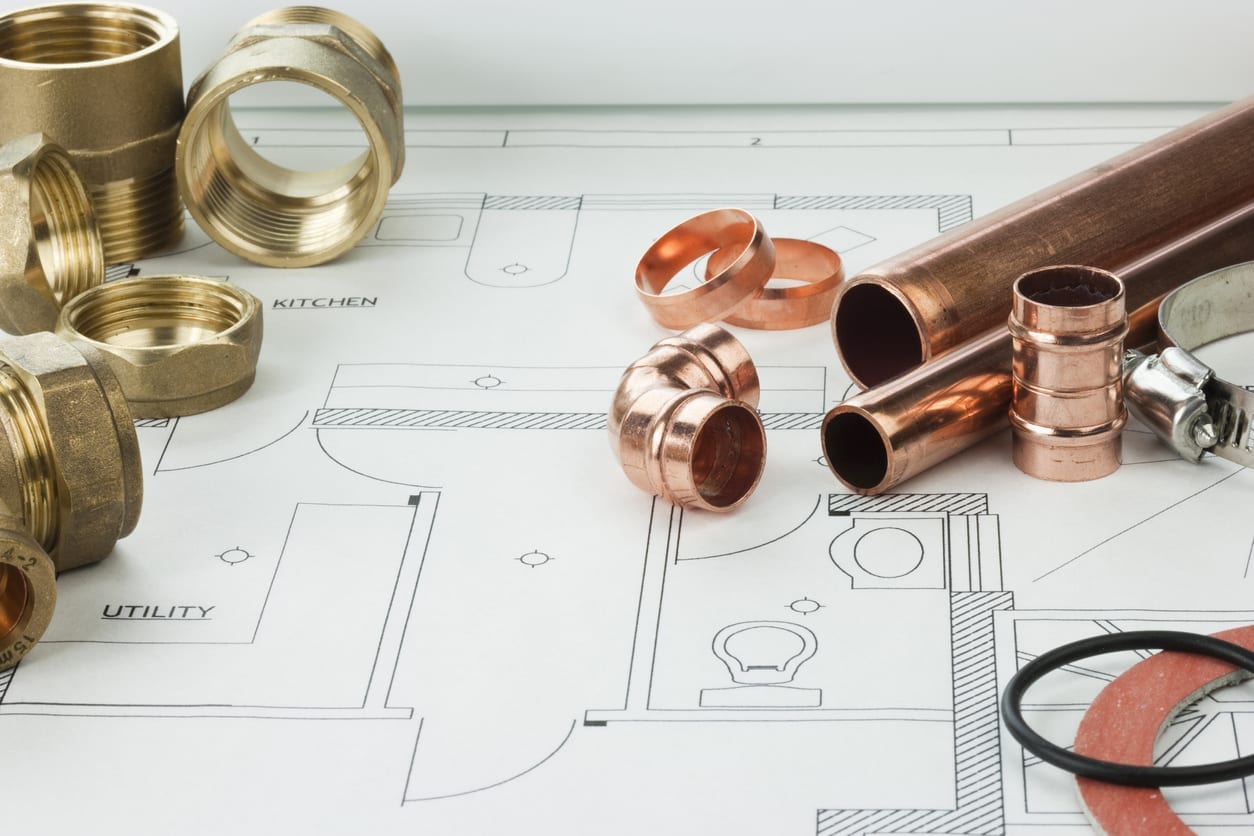An Overview to Your Home's Plumbing System Anatomy
An Overview to Your Home's Plumbing System Anatomy
Blog Article
Each person will have their own unique assumption when it comes to Plumbing Installation 101: All You Need to Know.

Recognizing just how your home's pipes system works is essential for every homeowner. From delivering clean water for alcohol consumption, food preparation, and showering to securely eliminating wastewater, a well-kept plumbing system is essential for your family's health and comfort. In this comprehensive guide, we'll discover the complex network that comprises your home's plumbing and offer ideas on maintenance, upgrades, and dealing with common issues.
Intro
Your home's pipes system is greater than just a network of pipes; it's a complex system that ensures you have accessibility to tidy water and effective wastewater elimination. Understanding its elements and how they interact can assist you avoid costly repairs and ensure every little thing runs smoothly.
Standard Parts of a Plumbing System
Pipelines and Tubes
At the heart of your plumbing system are the pipelines and tubes that carry water throughout your home. These can be made from different materials such as copper, PVC, or PEX, each with its benefits in terms of resilience and cost-effectiveness.
Components: Sinks, Toilets, Showers, etc.
Components like sinks, bathrooms, showers, and tubs are where water is used in your house. Comprehending just how these fixtures connect to the pipes system helps in diagnosing issues and preparing upgrades.
Valves and Shut-off Factors
Valves manage the flow of water in your pipes system. Shut-off shutoffs are important during emergencies or when you need to make fixings, allowing you to separate parts of the system without disrupting water circulation to the whole home.
Water Supply System
Key Water Line
The main water line links your home to the metropolitan supply of water or an exclusive well. It's where water enters your home and is distributed to numerous fixtures.
Water Meter and Stress Regulatory Authority
The water meter steps your water use, while a stress regulatory authority makes certain that water flows at a risk-free stress throughout your home's plumbing system, stopping damages to pipes and components.
Cold Water vs. Warm water Lines
Understanding the distinction in between cold water lines, which provide water directly from the primary, and warm water lines, which carry heated water from the water heater, aids in repairing and planning for upgrades.
Drainage System
Drain Pipes Pipes and Traps
Drain pipes bring wastewater far from sinks, showers, and toilets to the sewer or septic system. Traps avoid drain gases from entering your home and additionally catch particles that could trigger obstructions.
Air flow Pipes
Ventilation pipes allow air right into the drain system, protecting against suction that could slow drainage and cause traps to empty. Correct air flow is essential for maintaining the integrity of your plumbing system.
Significance of Proper Drainage
Ensuring correct drain prevents back-ups and water damages. Consistently cleansing drains pipes and keeping catches can protect against pricey fixings and extend the life of your plumbing system.
Water Heating System
Types of Water Heaters
Hot water heater can be tankless or typical tank-style. Tankless heating systems heat water as needed, while storage tanks keep heated water for prompt usage.
How Water Heaters Link to the Plumbing System
Recognizing exactly how water heaters connect to both the cold water supply and warm water distribution lines assists in identifying issues like not enough hot water or leakages.
Upkeep Tips for Water Heaters
Routinely purging your water heater to get rid of sediment, checking the temperature level settings, and evaluating for leakages can prolong its lifespan and boost energy performance.
Typical Pipes Issues
Leakages and Their Causes
Leakages can occur because of aging pipelines, loose fittings, or high water stress. Addressing leakages promptly stops water damage and mold and mildew development.
Clogs and Obstructions
Clogs in drains pipes and toilets are commonly caused by purging non-flushable things or a build-up of grease and hair. Using drainpipe displays and being mindful of what drops your drains pipes can prevent obstructions.
Indicators of Plumbing Issues to Watch For
Low tide stress, sluggish drains pipes, foul odors, or uncommonly high water bills are indicators of potential pipes problems that must be addressed without delay.
Pipes Upkeep Tips
Routine Inspections and Checks
Set up yearly plumbing inspections to catch concerns early. Seek indicators of leaks, corrosion, or mineral build-up in faucets and showerheads.
DIY Upkeep Tasks
Simple tasks like cleansing faucet aerators, looking for toilet leaks utilizing color tablets, or protecting subjected pipelines in cold climates can avoid significant pipes concerns.
When to Call a Specialist Plumbing Professional
Know when a plumbing issue needs expert experience. Attempting complex repair services without proper knowledge can result in more damage and higher repair work expenses.
Upgrading Your Plumbing System
Reasons for Updating
Updating to water-efficient components or changing old pipelines can enhance water high quality, minimize water expenses, and boost the value of your home.
Modern Plumbing Technologies and Their Benefits
Discover modern technologies like clever leakage detectors, water-saving commodes, and energy-efficient hot water heater that can conserve money and decrease ecological influence.
Price Factors To Consider and ROI
Determine the in advance expenses versus long-term financial savings when taking into consideration pipes upgrades. Numerous upgrades pay for themselves through reduced energy costs and fewer fixings.
Ecological Influence and Preservation
Water-Saving Components and Appliances
Mounting low-flow taps, showerheads, and commodes can substantially minimize water usage without compromising performance.
Tips for Reducing Water Usage
Straightforward routines like fixing leaks quickly, taking shorter showers, and running complete tons of washing and meals can save water and reduced your energy costs.
Eco-Friendly Pipes Options
Take into consideration lasting pipes products like bamboo for floor covering, which is durable and environmentally friendly, or recycled glass for counter tops.
Emergency situation Readiness
Actions to Take Throughout a Plumbing Emergency situation
Know where your shut-off valves lie and just how to turn off the supply of water in case of a burst pipe or major leak.
Value of Having Emergency Get In Touches With Helpful
Maintain call details for neighborhood plumbing technicians or emergency situation solutions easily offered for fast reaction throughout a plumbing situation.
DIY Emergency Fixes (When Applicable).
Short-lived repairs like making use of air duct tape to patch a dripping pipe or positioning a container under a trickling tap can minimize damages up until a professional plumber shows up.
Conclusion.
Recognizing the anatomy of your home's pipes system equips you to keep it efficiently, conserving time and money on repairs. By complying with regular upkeep routines and remaining educated regarding modern-day plumbing modern technologies, you can ensure your plumbing system runs efficiently for many years to come.
HOW YOUR PLUMBING SYSTEM WORKS
Which Pipes Do What?
Blue lines = fresh water supply entering the building
Red lines = hot water supply entering the building
Grey lines = pipes carrying waste away from the building and venting pipes carrying gases away from the building (through the roof)
YOUR MAIN PLUMBING SYSTEMS
There are two main plumbing systems that support your home s basic plumbing needs one that brings clean water into your home, and one that sends dirty water away from your home. Connected to the toilet, bath, shower, and other faucets in your home, these two systems keep your water flowing in the right directions.
ACCESSING FRESH WATER
Fresh and clean water is brought into your home through the main water supply line . Filtered through one pipe, this water is pressured to flow into the various fixtures in your home at any given time.
This water can be sourced from a well located on your property, a pond or river (mostly cottages), or, as in most cases, from the city s municipal water treatment centre. However, it is important to note that water that is untreated, such as the water siphoned from ponds or rivers, may not be safe to drink. Personal water supplies always need to be treated for hardness and contaminants before consumed.
MUNICIPAL WATER SUPPLIES
Improve taste and odour
Remove sediment
Eliminate hardness
Reduce chlorine
COLD WATER SUPPLY VS. HOT WATER SUPPLY
Cold water flows into your home or building through the service line, which then distributes hot or cold water to your fixtures. This line is most commonly run through a central column that runs floor to floor. Hot water runs in short and straight pipes as the longer the pipeline, the more heat that will be lost in the transfer. Having shorter pipes also allows residents to access hot water more quickly.
WASTE WATER SYSTEM
Your wastewater system is divided into two parts pipes that send wastewater away from your home and venting pipes that send sewer gas away from your home. Sewage water travels through pipes that flush the water and waste towards local sewers that are operated and managed by your city or town. Most sewer systems rely on gravity to move the wastewater to where it needs to go.
The further away from your toilet or sink, the larger wastewater pipes become. This allows for waste to be disposed of from various parts of your home or business at once without pipe blockages. The angle and flow of these pipes are also essential for keeping your waste pipes clear of build up.
https://harrisplumbing.ca/how-your-home-plumbing-system-works/

HOW YOUR PLUMBING SYSTEM WORKS
Which Pipes Do What?
YOUR MAIN PLUMBING SYSTEMS
There are two main plumbing systems that support your home s basic plumbing needs one that brings clean water into your home, and one that sends dirty water away from your home. Connected to the toilet, bath, shower, and other faucets in your home, these two systems keep your water flowing in the right directions.
ACCESSING FRESH WATER
Fresh and clean water is brought into your home through the main water supply line . Filtered through one pipe, this water is pressured to flow into the various fixtures in your home at any given time.
This water can be sourced from a well located on your property, a pond or river (mostly cottages), or, as in most cases, from the city s municipal water treatment centre. However, it is important to note that water that is untreated, such as the water siphoned from ponds or rivers, may not be safe to drink. Personal water supplies always need to be treated for hardness and contaminants before consumed.
MUNICIPAL WATER SUPPLIES
COLD WATER SUPPLY VS. HOT WATER SUPPLY
Cold water flows into your home or building through the service line, which then distributes hot or cold water to your fixtures. This line is most commonly run through a central column that runs floor to floor. Hot water runs in short and straight pipes as the longer the pipeline, the more heat that will be lost in the transfer. Having shorter pipes also allows residents to access hot water more quickly.
WASTE WATER SYSTEM
Your wastewater system is divided into two parts pipes that send wastewater away from your home and venting pipes that send sewer gas away from your home. Sewage water travels through pipes that flush the water and waste towards local sewers that are operated and managed by your city or town. Most sewer systems rely on gravity to move the wastewater to where it needs to go.
The further away from your toilet or sink, the larger wastewater pipes become. This allows for waste to be disposed of from various parts of your home or business at once without pipe blockages. The angle and flow of these pipes are also essential for keeping your waste pipes clear of build up.
https://harrisplumbing.ca/how-your-home-plumbing-system-works/
As a devoted reader on The Inner Workings of Your Home's Plumbing, I figured sharing that post was important. Those who enjoyed reading our page plz don't forget to pass it around. Thank you so much for going through it.
Book Appointment Now Report this page